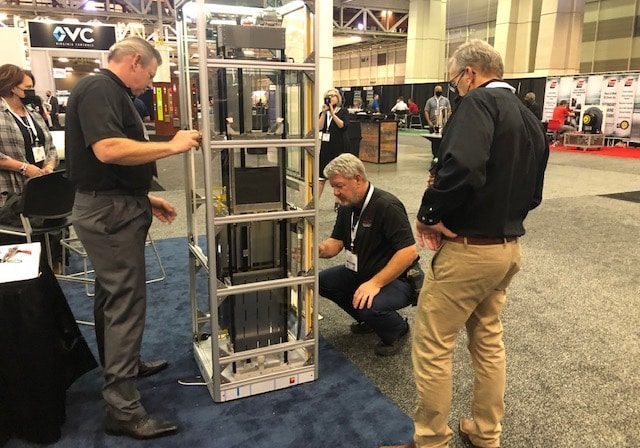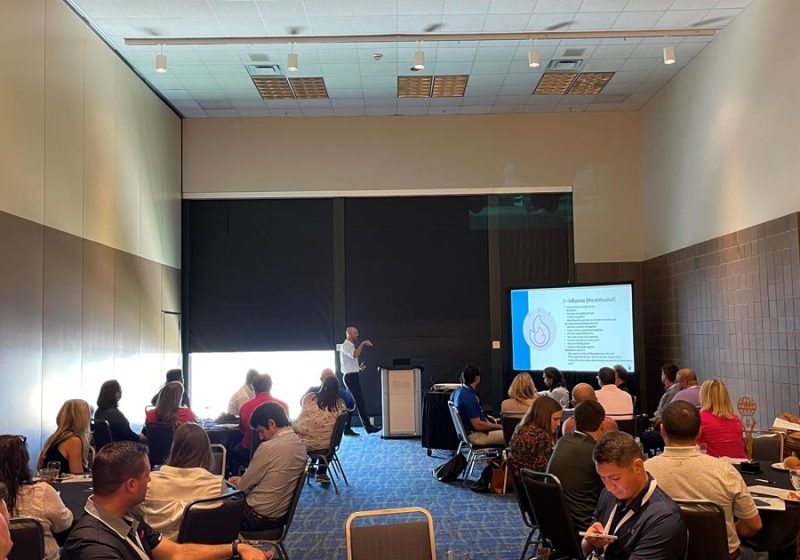Back in Action
Dec 1, 2021
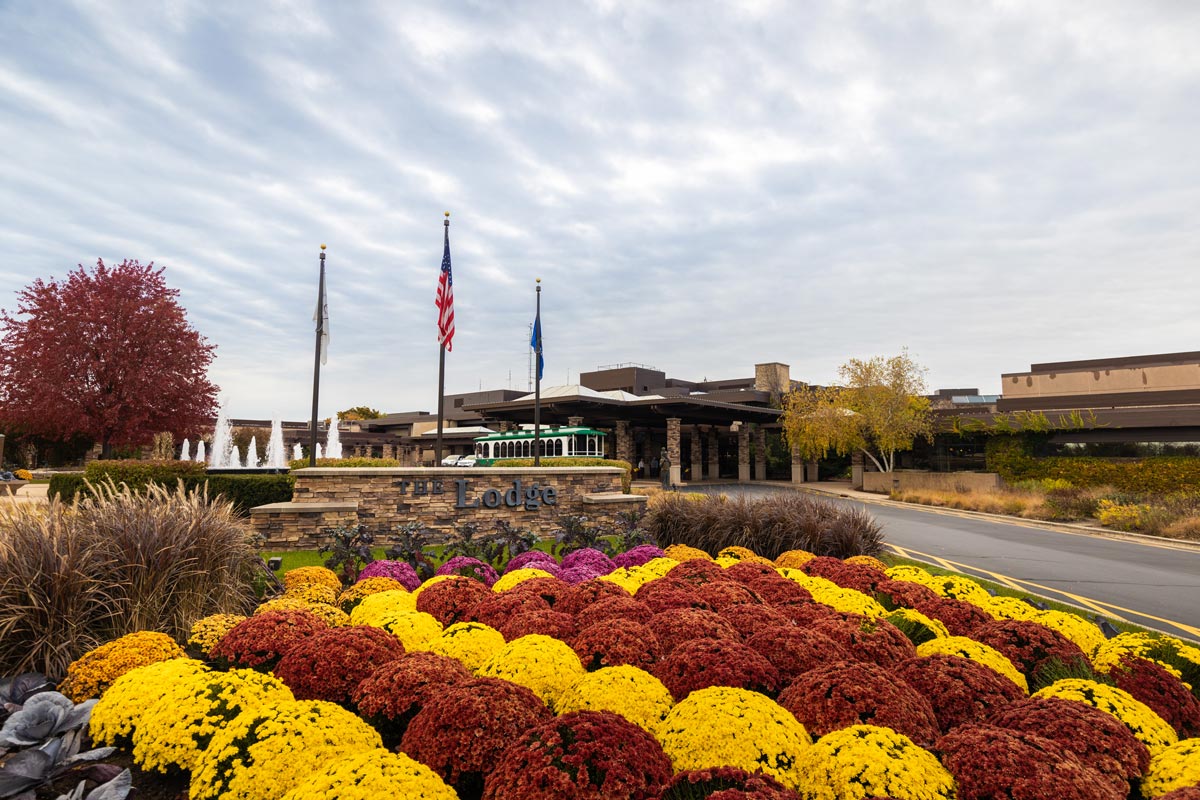
NAESA International welcomes approximately 200 to Wisconsin as it celebrates 50 years.
Celebrating its 50th anniversary, NAESA International was proud to host an in-person event after a year off due to the COVID-19 pandemic. The 16th annual Wisconsin symposium, the 10th hosted by NAESA, welcomed members, inspectors, mechanics, sponsors, exhibitors, consultants and speakers to the Grand Geneva Resort & Spa in Lake Geneva, Wisconsin, in late September/early October with beautiful fall colors hitting the trees — the likes of which your author is not used to seeing, being from the Alabama Gulf Coast.
Attendees were abuzz with the excitement of catching up with old friends, networking with new contacts and learning about recently published safety code updates for elevators and escalators and up-to-date information on items of interest within the industry.
Thursday, September 30
The day started with breakfast beginning at 6:30 a.m., but the attendees didn’t delay in arriving and filling up the specified room at the Grand Geneva Resort’s The Forum event center bright and early on this first day.
The room was buzzing with conversation, as it seemed many were excited to see those they hadn’t in a while and get together with like minds in person.
The program kicked off at 7:45 a.m. with Jim Borwey, executive director for NAESA and former chief inspector for Iowa, welcoming the group. A video of the National Anthem was played, and the day was underway. In his first in-person event as executive director, Borwey thanked everyone for attending and, in acknowledging NAESA’s 50th anniversary, said to the group, “Without you, we’d no longer exist. We’re really proud of 50 years as an organization.”
Christopher Dodds, vice president of NAESA, was the emcee of the event, taking the spot of Jack Day, education director for NAESA International, who could not attend this year.
Next up, Dawn Crim, secretary of the Department of Safety and Professional Services of Wisconsin, said that in her three years in the role, she has “become intimately involved with elevators.” She said her office touches over 1 million Wisconsinites, including those needing licenses, and, “We understand the importance of continuing to do the work.” She said she was proud to have kept licenses current through the pandemic and that her office and the paperwork involved is now almost 100% electronic. “We figured out how to work together to keep the construction industry going,” she said. “I am pleased and proud to see all of you in person again. Welcome.”
First to take the podium to discuss code updates was Bill Snyder, VTE Solutions, presenting “A17.1 2019 Highlights.” It was noted that Wisconsin is not adopting the 2019 updates, but Snyder remarked that with the large number (more than 400, with 340-350 being called “significant”) of changes in the 2019 code, those adopting later updates would need to be aware of the 2019 updates.
“If you go straight to the next edition, you won’t know what changed for the 19 code,” Snyder said. Many of the 2019 changes had to do with definitions and terms: trying to normalize the way the terms are used through the code itself. He went over a number of terms and how they may be used differently now.
Snyder said a number of the code’s changes clarified or made corrections and were made to be more in line with Americans with Disabilities Act compliance. When making changes to the code, Snyder acknowledged the “painful balance” needed to get things pushed forward and how much word-smithing goes into writing the changes.
Next, Kevin Heling from Wurtec presented “Alternative Testing, Reading the Reports and Other Concerns,” which looked at the benefits of using an alternative method (electronic measurement) for Category 5 Testing. This type of testing, using electronic sensors and not requiring a full load to get the results, was verified by Liftinstituut in 2018 and is now permitted in certain states, including Wisconsin.
“Electronic testing is providing better safety for the elevators,” Heling said. “It is becoming the way of the industry.” He added that one big advantage to digital testing is it provides data. Other benefits include reduced injury to personnel, reduced potential damage to property and the creation of more work in the way of maintenance and repairs. He gave a thorough review of the reports offered by the test and what data can be obtained before answering numerous technical questions from the audience.
After a short morning break, “Wisconsin Updates” was presented by Ed Sabo (filling in for Brian Rausch) and Kim Schmitt, both with the state of Wisconsin. Sabo began by saying that Wisconsin has one of the oldest elevator codes in the country from 1912/1914, with the latest revision being in April 2021. He focused on plan review application requirements and what could help applications move forward quickly, rather than being held. He also discussed the number of accidents in Wisconsin in the last 10 years, with 12 escalator accidents due to loss of balance, 10 falls with ambulatory equipment and three from misuse. In elevators, there were 27 door-closing incidents, 11 stopped out of level, four falls, four abrupt stops, one intentional overload and one “other.”
Schmitt discussed the new online accident-reporting database and some of the hiccups the system has had. He said his office is aware of the issues and working on them. He went over the Electronic Safety and Licensing Application (ESLA) and how it works, as well as the online elevator permit process.
After lunch, Don Holloway and James Bowers of Kings III presented “Need to Know About Two-Way Communication in ASME Elevator Safety Code Updates.” Their presentation looked at how the ASME code now requires essentially two-way video communication between elevator passengers and emergency personnel operators. Holloway likened it to the Zoom calls that we’ve all come to know and love in the past almost two years, saying, “If I can’t hear you, I can message you. If I can’t see you, I can message you.” The operator does the same, going through a list to ensure passenger safety in the event that someone inside cannot hear or verbally communicate. Video of the entire elevator car floor shows if someone is incapacitated or if there’s a false alarm and no one is inside the car.
Technical specifications were discussed, and the issue of cyber security was brought up. Bowers indicated that this is a potential risk, but said they are having those conversations now with their partners to work on fixing this.
The next afternoon presentation saw a switch-up in the agenda, with Ian MacMillan of KONE presenting “Inspection, Testing, and Code Requirements for MRLs” early. His presentation was not KONE-specific but included pictures and details from various OEMs that inspired good audience participation and conversation.
MacMillan implored the inspectors not to freelance but to follow the manufacturer’s procedures manual to ensure their safety. “There are lots of things you’ll be doing in the hoistway that you wouldn’t normally be,” he said. “Take whatever safety methods are appropriate for the location where you’re doing the inspection.”
MacMillan indicated he preferred live events because of the audience’s knowledge and experience being shared. In closing, he applauded the group on the “excellent dialogue,” adding, “I think I learn as much from everyone else when I do these things as I hope I have purported.”
Before the next session, NAESA annual elections were held for four members to be added to the Board of Directors for the next three years. Gary Barnes with the state of Idaho, Stephanie Coyne with the Technical Standards and Safety Authority, and Snyder are all returning members, while Alan Murph with the state of Nevada is the newcomer. All four were voted in unanimously. Three positions were available on NAESA’s
Board of Certification with Barnes, Coyne and Loannie Reyes with Authentic Elevator Services unanimously approved to
join the board.
To close the day, Kenin Lynes with National Elevator Inspection Services presented the last third of his presentation, “ANSI A117.1 to LULA and Residential,” as part of the switch with MacMillan. This part focused on platform lifts. More on Lynes’ presentation below.
There was a brief break before the Opening Night Reception and the Elevator Escalator Safety Foundation (EESF) Silent Auction, which gave participants time to socialize, eat and drink, visit the exhibitor booths and bid on silent auction items. Hot ticket items seemed to be a Fitbit®, an Amazon Echo and a basket of whiskey.
Friday, October 1
On day two, the crowd, again, arrived early. Dodds remarked that he was sure everyone enjoyed seeing each other and said he was happy that, by the size of the crowd, no one seemed to have overdone it at the reception the night before.
Lynes then presented the first part of his presentation on residential and limited use/limited application (LULA) lifts. When speaking about the point of the code, he said “everything is required to be accessible,” which was focused on heavily in his presentation. Mixed in with the slides about the 2019 code changes were pictures of his adorable granddaughter, Violet.
Next up, James Boxmeyer presented “Elevator Safety, Inspection Techniques, and Observing Deficiencies During Inspections.” Boxmeyer said he has a love of aviation and tied this in with inspecting elevators: you have to have a checklist, and you have to be careful; it’s a long way down. He added that there’s a saying in aviation that there are “no old and bold pilots,” and said he imagined it is probably the same for elevator inspectors. “The smallest thing could cause your injury or death.”
The passionate Boxmeyer had quite a few pictures showing deficiencies; a photo of an improperly installed governor that was missed for eight years sparked a lively conversation with the crowd. He encouraged attendees to never assume and to gain new information on a regular basis. In a serious moment, he then quoted Michael Mellon, retired director of the elevator division of the Commonwealth of Pennsylvania, by saying, “You will never know how many lives you save just by doing your job.”
Next, F. Charlie Slater, ATIS Elevator Inspections, LLC, who was originally scheduled for the first day, presented on “ASME A17.1-2016 8.6; 8.6.1-8.6.7 Maintenance.” He discussed how the maintenance control program (MCP) shows what needs to be, how it should be, and when it should be examined, tested, cleaned, lubricated and adjusted. When discussing the MCP and equipment, he said, “You need to do your homework to understand how that equipment works. If not, you shouldn’t be inspecting it.” He said the role of inspectors is to make sure the MCP checks all the boxes and to ensure that maintenance records are legible, up to date and available to elevator personnel. Slater also joked that the conference is held at the same resort every year, but there’s “only one elevator in the entire place.”
For the final presentation of the symposium, Frank Revoir, Urban Elevator Service, presented “Rack-and-Pinion Hoists/Elevators.” From the outset, his presentation sparked an audience-wide discussion of what qualifies as a rack-and-pinion elevator. A few in the audience had never been on one, but Revoir said he has embraced them and enjoys them. He encouraged the inspectors to not let the “one more ride” idea happen if something seems wrong. “If I won’t let my family ride the thing, I’m not keeping it in service,” he said.
After a successful day and a half, the closing remarks were positive about the 2021 event and gave attendees hope that everyone will, in fact, see each other next year.
Before heading out, those who qualified for the 1.2 hours of CEUs received their certificates.
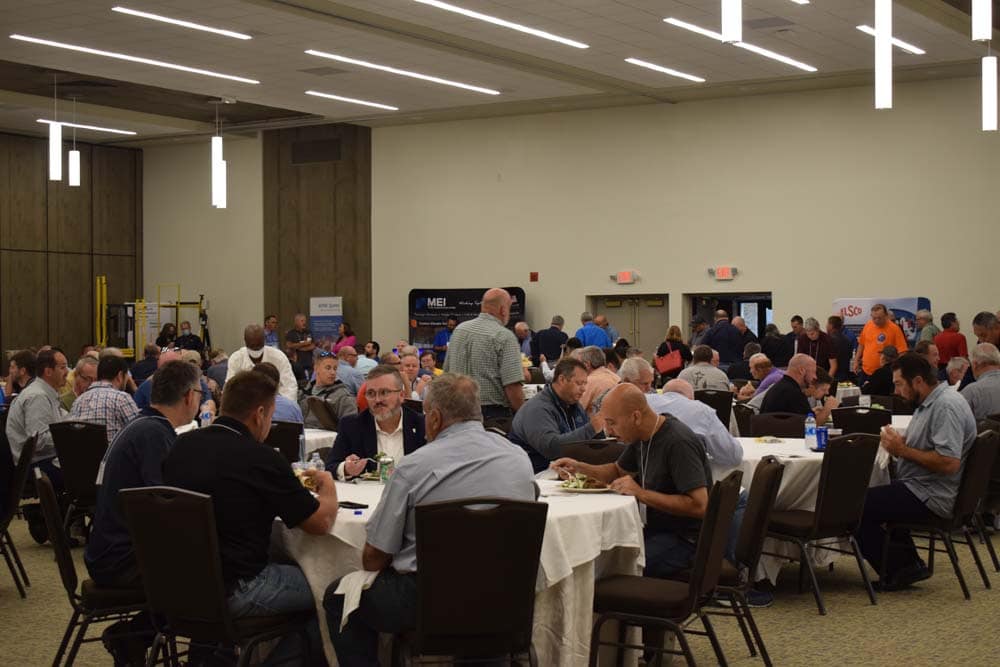
Approximately 200 were in attendance at this year’s event. 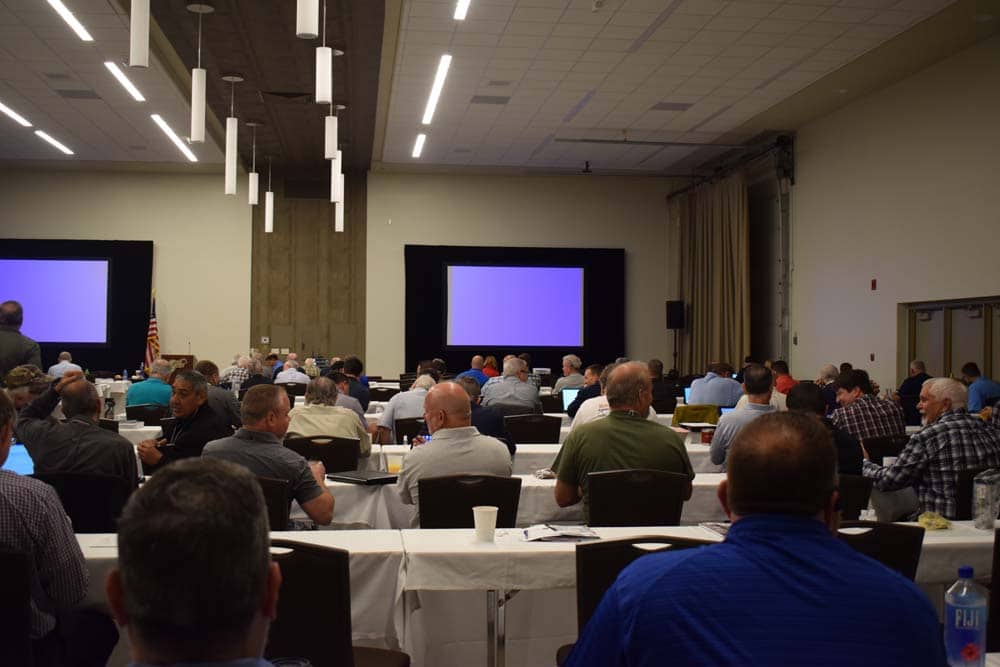
Attendees arrived early and filled the event space. 
Participants were excited to get together in person again. 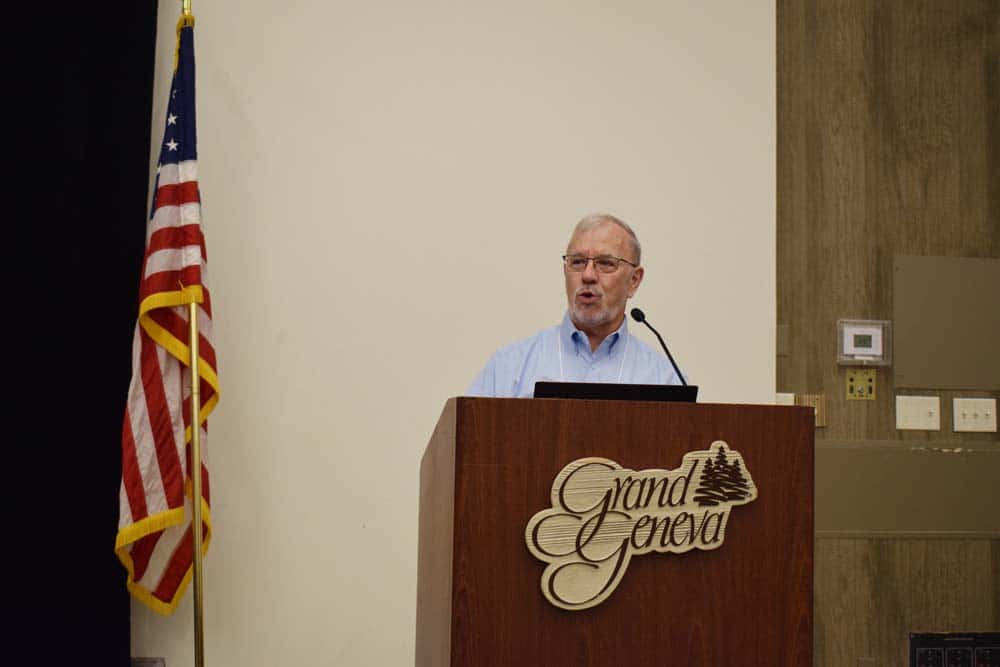
Bill Snyder, VTE Solutions 
F. Charlie Slater, ATIS Elevator Inspections, LLC 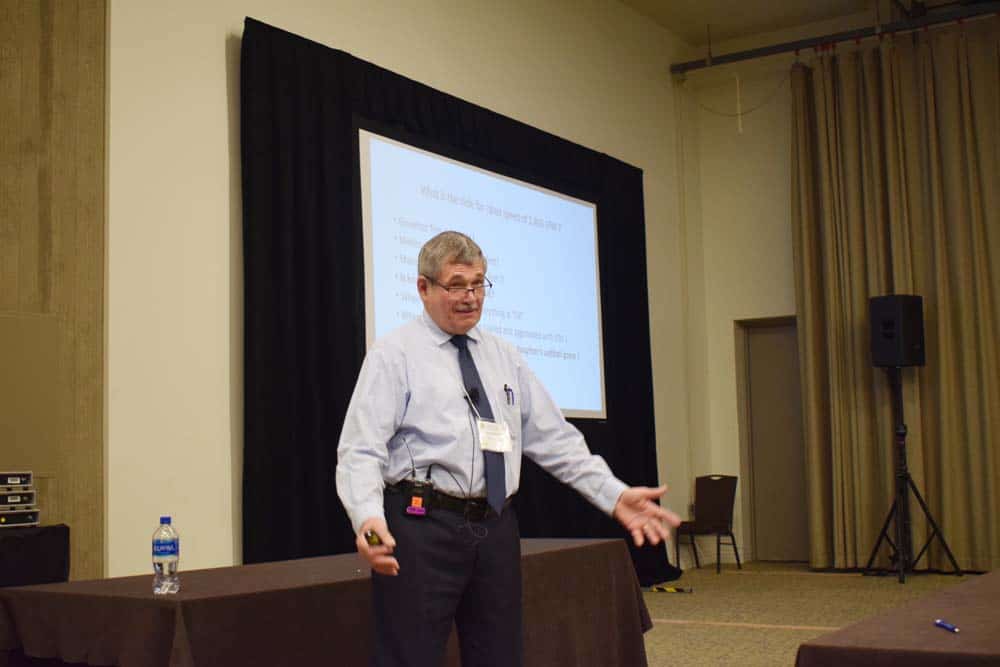
James Boxmeyer 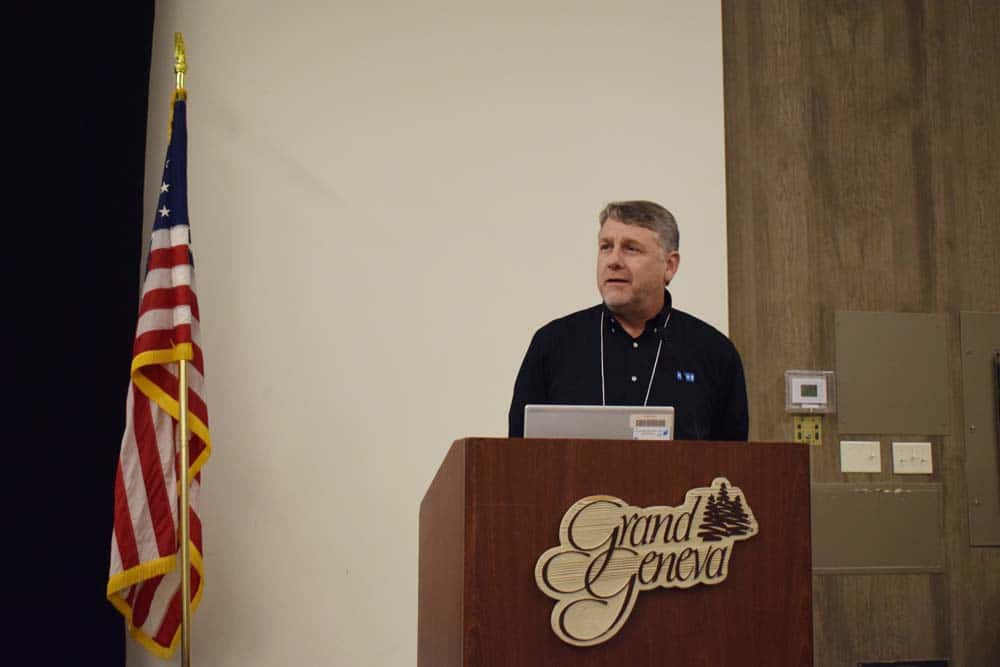
Ian MacMillian, KONE 
Dawn Crim, state of Wisconsin 
Elections for the Board of Directors and the Board of Certification were held. 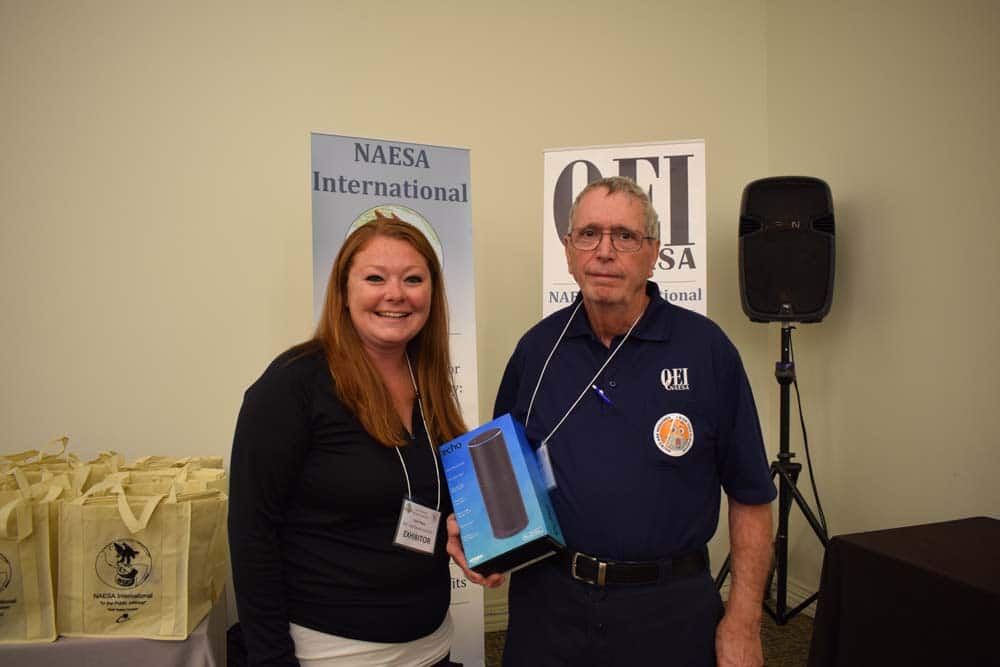
Martin Culp (right), University of Maryland, receives an Amazon Echo from Cami Place, Total Elevator Solutions, during the EESF silent auction. 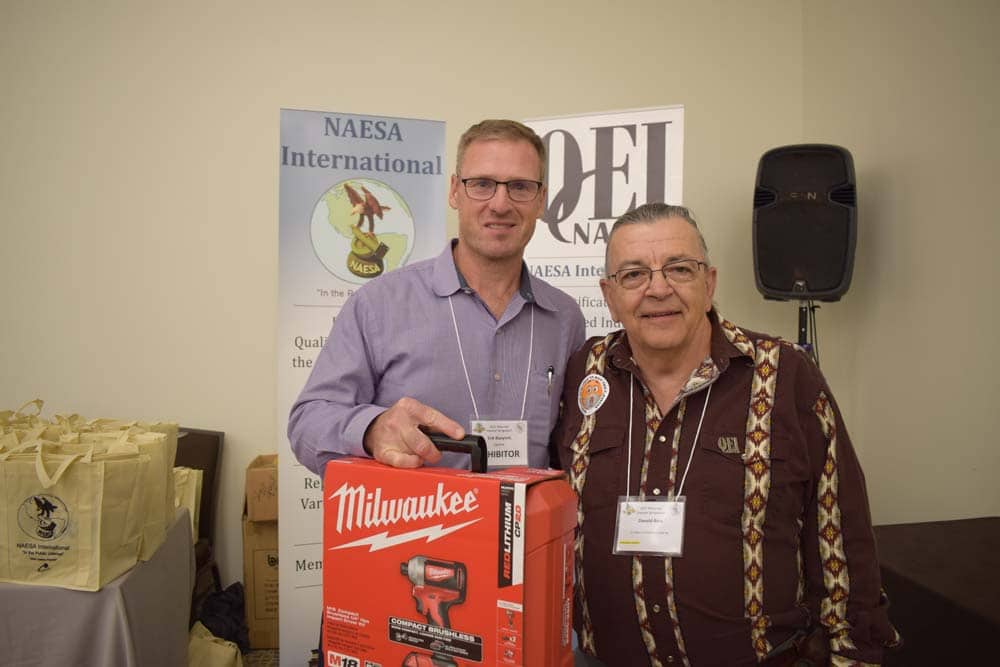
Erik Blazynski (left) with Upvate, presents Donald Ross, D.H. Ross Elevator Inspections Inc., with his EESF silent auction prize. 
Michael Johnson (left), Gorman Company, bought the Garmin from Lisa Grimes, Vator Accessories, during the EESF silent auction. 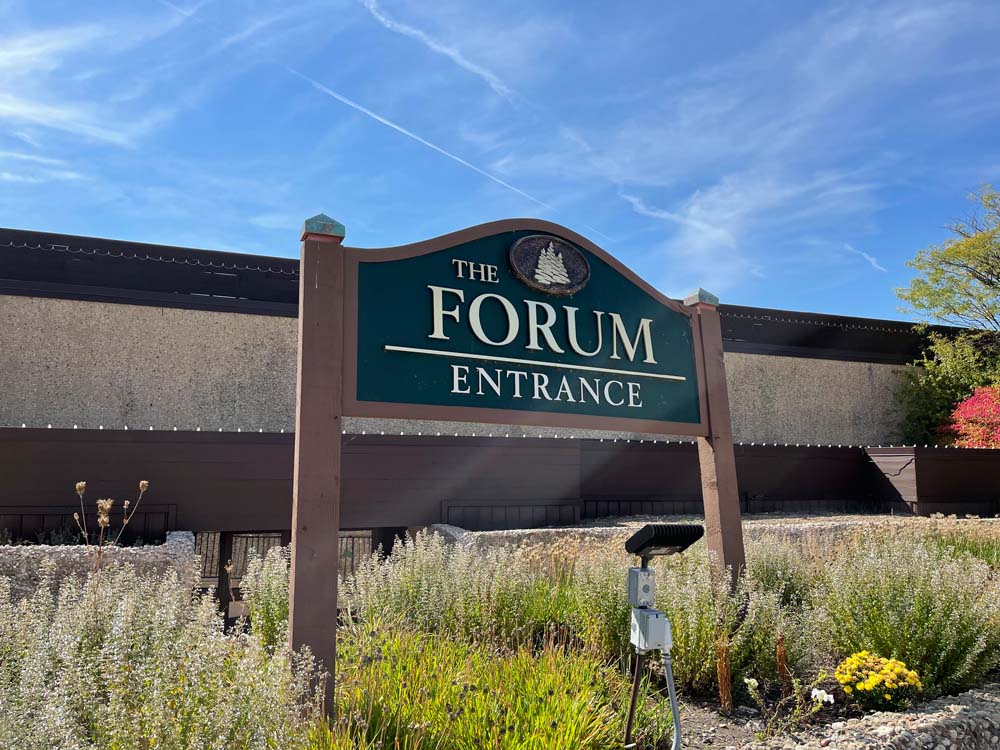
The symposium was held at The Forum at the Grand Geneva Resort. 
The Grand Geneva Resort & Spa in Lake Geneva, Wisconsin; images courtesy of Grand Geneva Resort
Get more of Elevator World. Sign up for our free e-newsletter.



